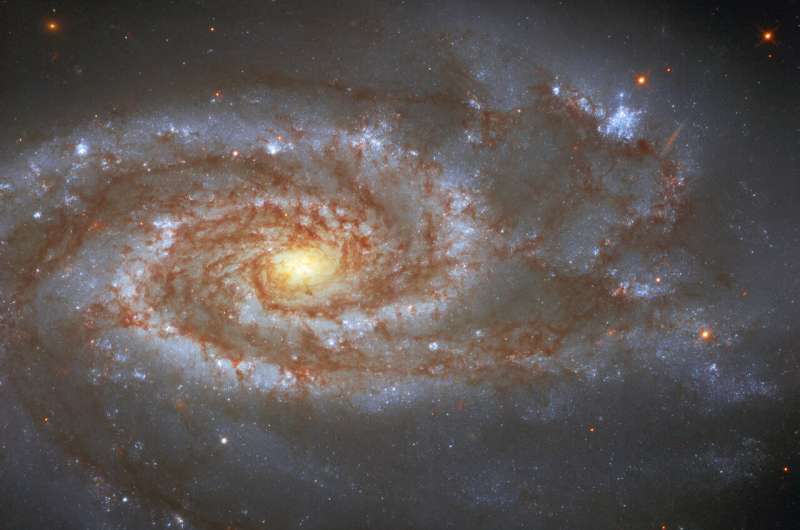Image: Hubble views galaxy host to two supernovae

Approximately 85 million light-years from Earth, in the constellation of Libra, is the beautiful galaxy NGC 5861, captured here by the NASA/ESA Hubble Space Telescope.
NGC 5861 is an intermediate spiral galaxy. Astronomers classify most galaxies by their morphology. For example, the Milky Way galaxy is a barred spiral galaxy. An intermediate spiral galaxy has a shape lying in between that of a barred spiral galaxy (one that appears to have a central bar-shaped structure) and that of an unbarred spiral galaxy (one without a central bar).
Two supernovae, SN1971D and SN2017erp, have been observed in the galaxy. Supernovae are powerful and luminous explosions that can temporarily shine brighter than any other star in the night sky. The brightest supernova ever recorded was possibly SN 1006, which exploded in our own Milky Way galaxy and shone 16 times as bright as Venus from April 30 to May 1, 1006 AD.
Provided by NASA's Goddard Space Flight Center





















